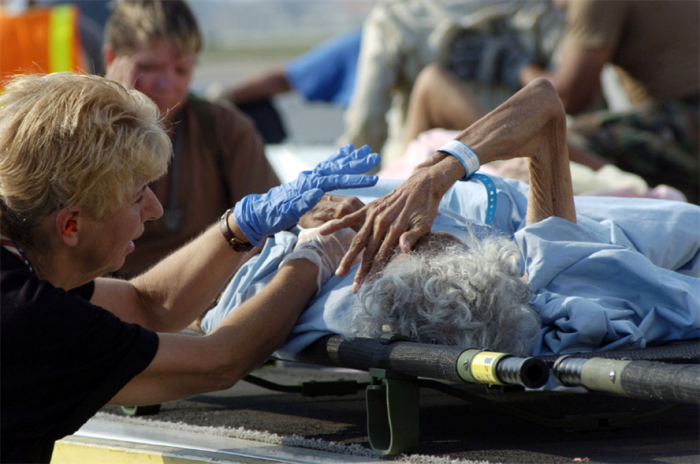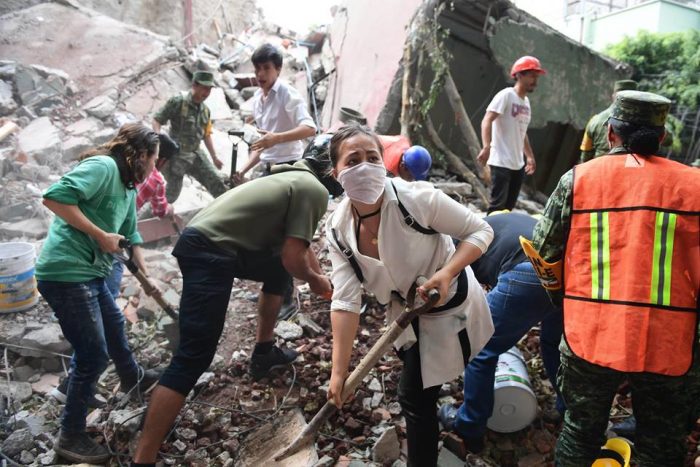How Funders Can Support Older Adults in Disasters
During the past two and a half months (just ten short weeks!), we’ve seen a record number of massive disasters. Hurricane Harvey hit Texas and Louisiana first, followed by Hurricane Irma in the Caribbean, Florida, and Georgia, and then Hurricane Maria, which devastated additional parts of the Virgin Islands and Puerto Rico. Most recently in […]


During the past two and a half months (just ten short weeks!), we’ve seen a record number of massive disasters. Hurricane Harvey hit Texas and Louisiana first, followed by Hurricane Irma in the Caribbean, Florida, and Georgia, and then Hurricane Maria, which devastated additional parts of the Virgin Islands and Puerto Rico. Most recently in California, wildfires have had a higher than normal impact on human life.
It is difficult to come to grips with the destruction seen across the country. During a recent webinar sponsored by Grantmakers in Aging, I had the opportunity to join Debra Jacobs of The Patterson Foundation, and Robert McFalls of the Florida Philanthropic Network in discussing what these events mean for older adult populations.
In any disaster, older adults face many unique challenges. Chronic disabilities or conditions require extra assistance to leave an area, return to it, and recover following a disaster. Consider that about 80 percent of older adults have at least one chronic condition such as heart disease, cancer, diabetes, or stroke, and 50 percent have two. Because of these or similar conditions, about 3 million older adults report they cannot perform basic daily living activities such as bathing, shopping, dressing, and eating. Imagine how overwhelming dealing with a disaster might be given those circumstances!
For older adults, the days following a disaster are often full of suffering. Their normal lifelines are interrupted, and they may not be able to access the medications or technology they need to help them function independently.
If they leave or are evacuated from a disaster area, studies have indicated that older adults are more likely to develop a health condition within 30 days. Following Hurricane Katrina, a study of 36,000 area nursing home residents found that there were 579 extra deaths and 544 extra hospitalizations in the 90 days following the event. The strain and anxiety of a disaster leaves older adults especially vulnerable to added health conditions as well as mental health and financial stress.
In our current disaster areas, there are significant populations over the age of 65. The most recent numbers from last year’s census update indicate that in Texas, about 12 percent of the population is above the age of 65; in Florida, that figure is about 20 percent; in Puerto Rico, about 19 percent; and in California, about 14 percent.
Here are a few things we can be doing right now as funders to support the needs of older adults in ongoing disaster situations:
- Support workshops and seminars that assist older adults in accessing benefits and other assistance in the aftermath of a disaster. In addition, fund transportation mechanisms to ensure they can access the workshops.
- Advocate that rebuilding codes are ADA compliant, and take advantage of the opportunity to rebuild better.
- Fund disaster preparedness and planning by supporting coordination and communication methods that take into account how older adults access information, as well as their unique needs during times of evacuation or shelter.
- Pay special attention to the nonprofits you already work with and ask how they are interfacing with older adults. Consider providing additional support for their work with this population.
- Advocate across sectors for the needs of older adults. In your work with federal, state, city, and county emergency managers, as you liaise with other funders, and as you work within your VOAD networks, ask that they consider the needs of older adults as they plan, prepare, respond, and recover.
There are many more resources for you in this area. Check out the Disaster Philanthropy Playbook’s Aging and Disabled Populations and the Health and Behavioral Health strategies for takeaways, lessons learned, and resources gleaned from other disasters.
More like this

Four Funds Support Recovery from Tragic Disaster Season
